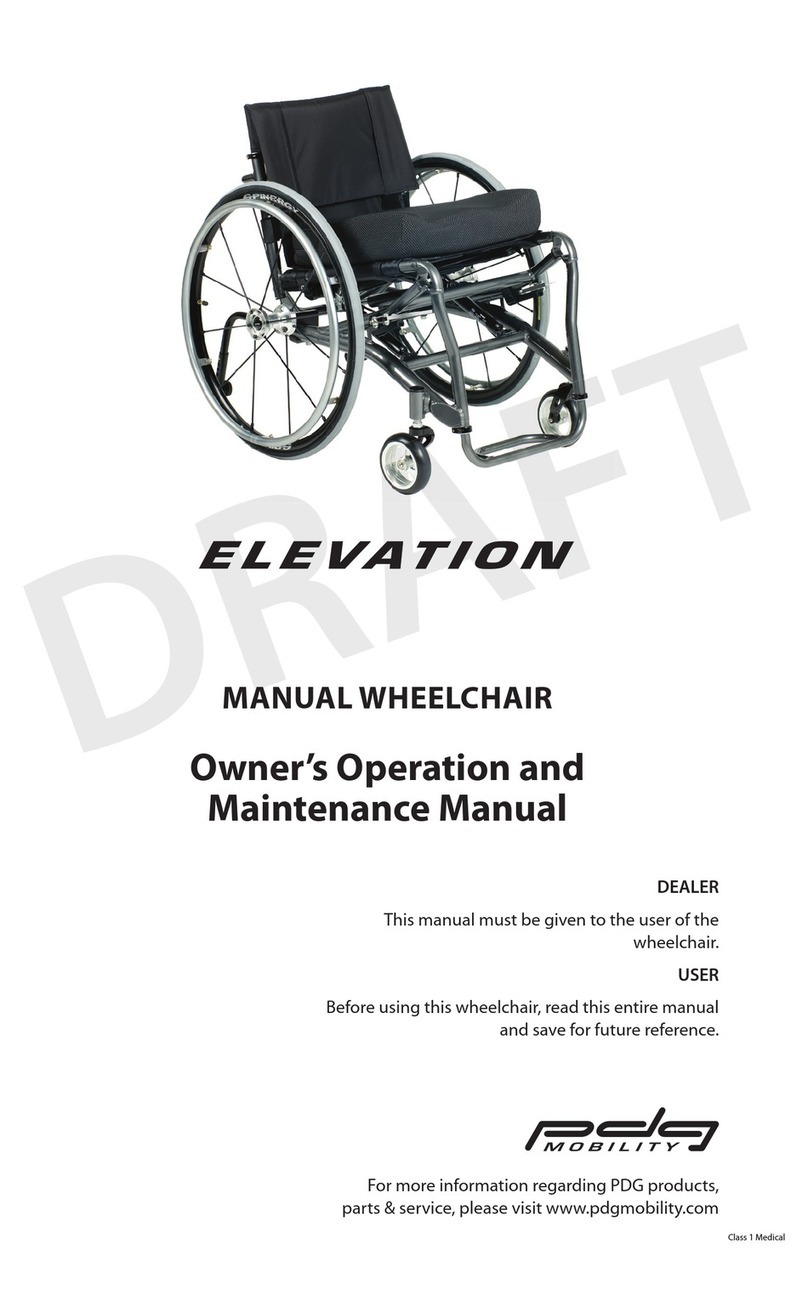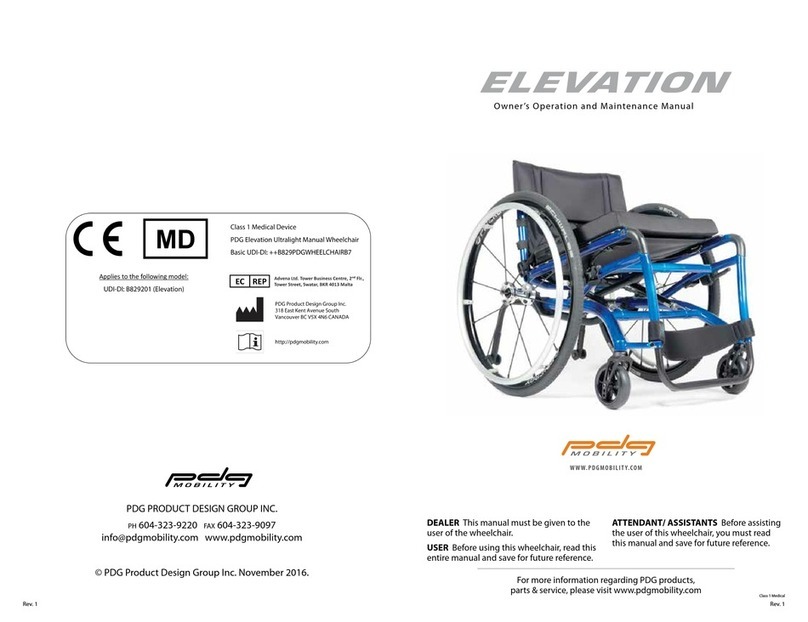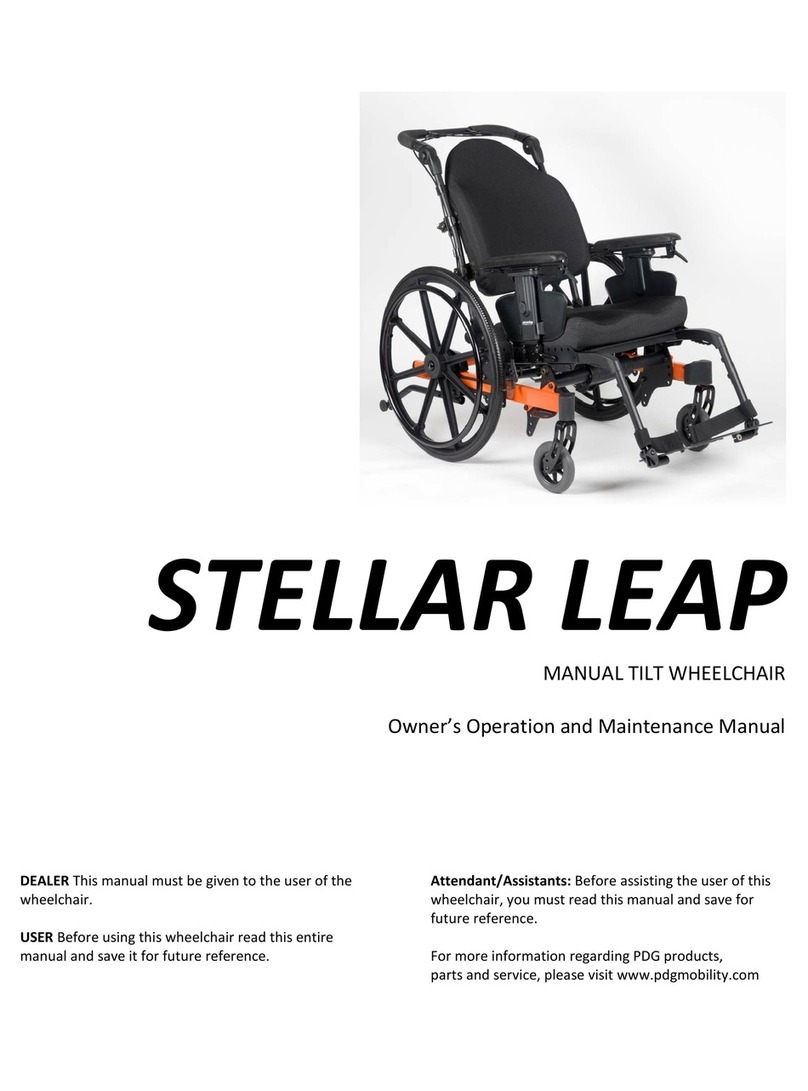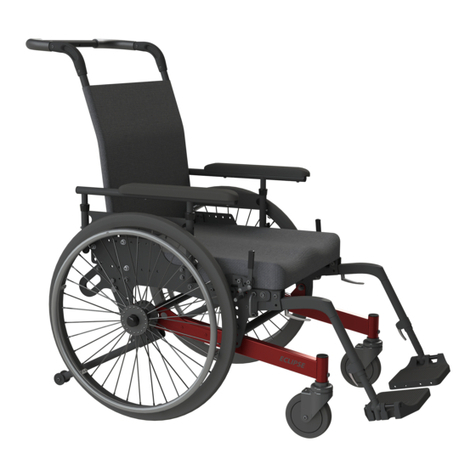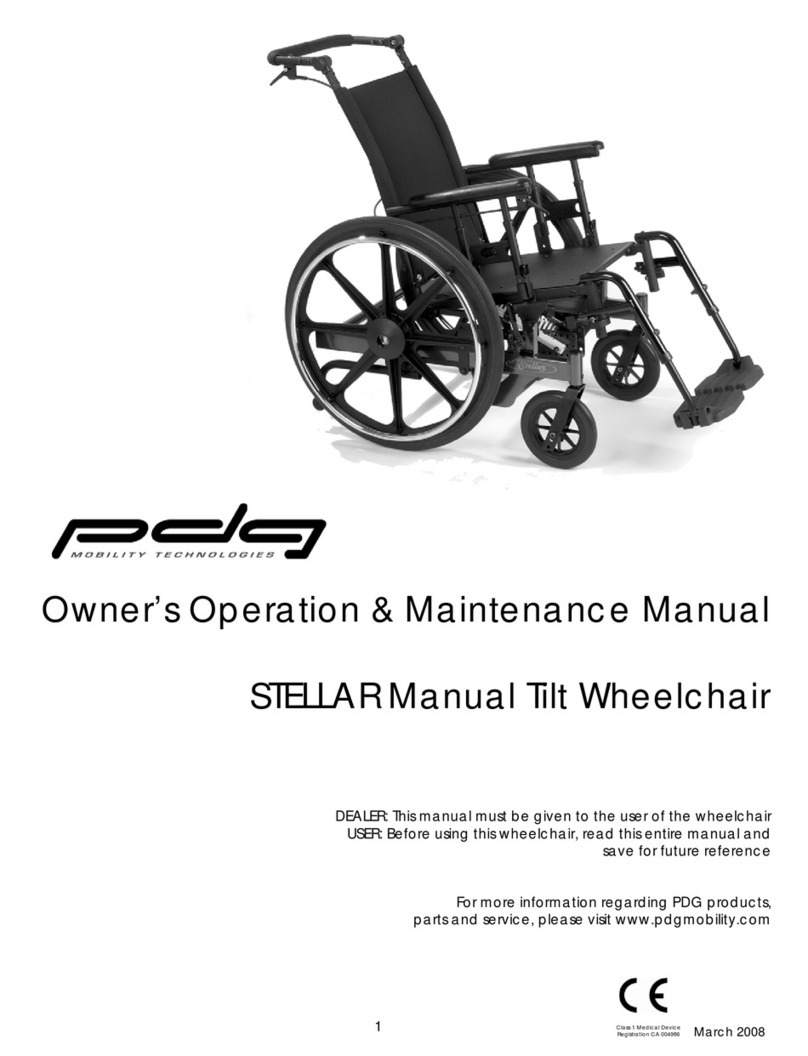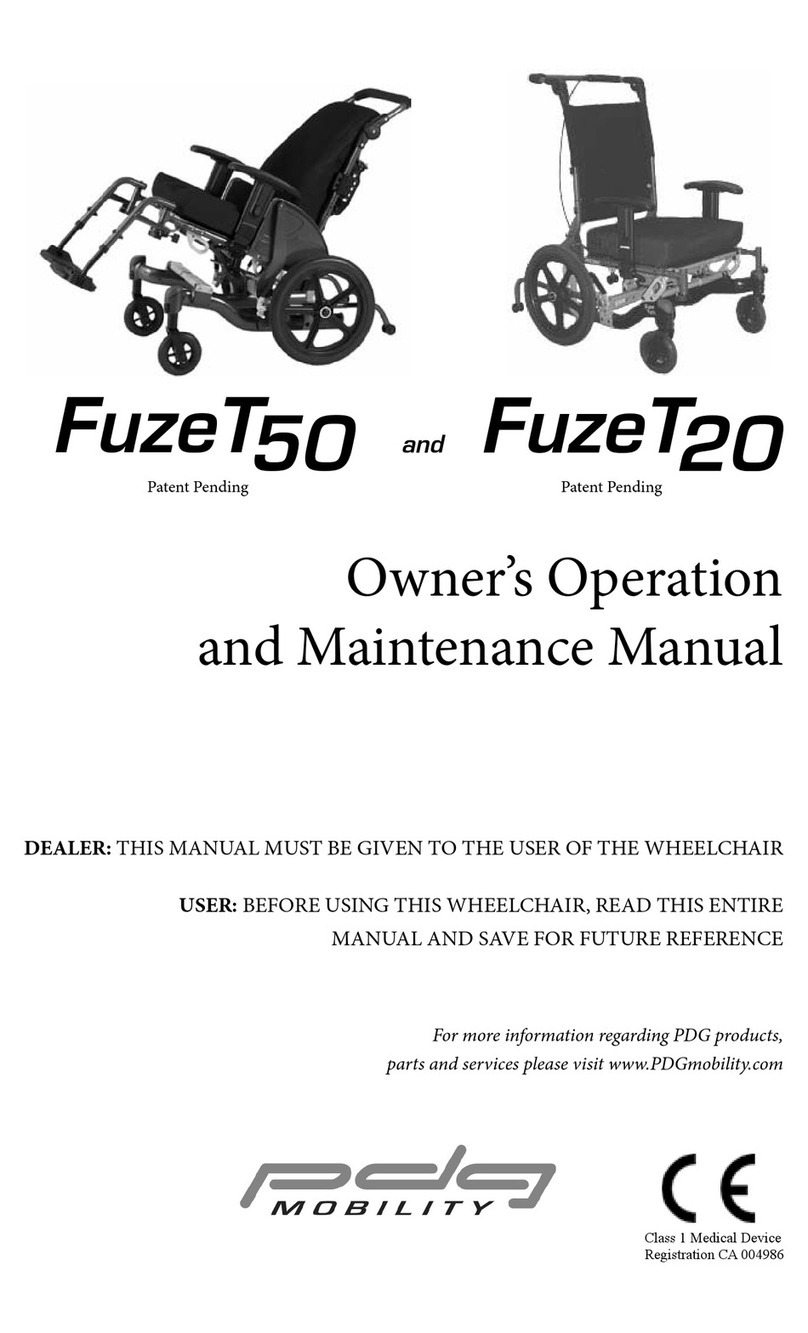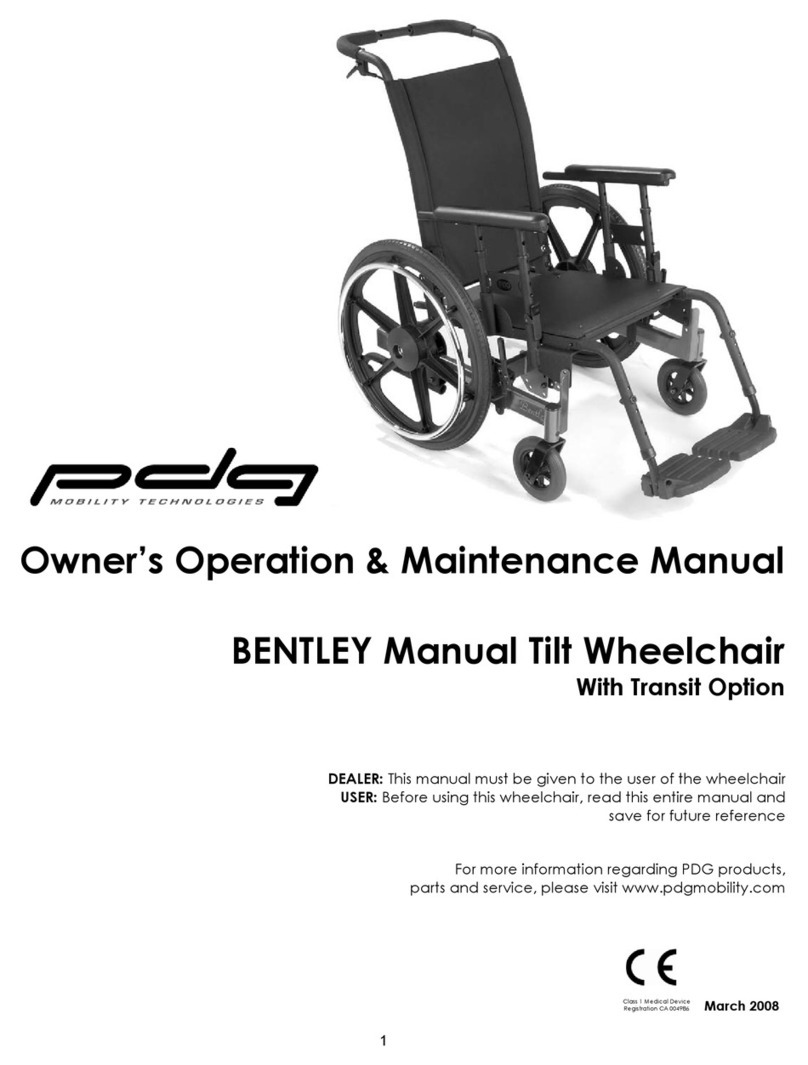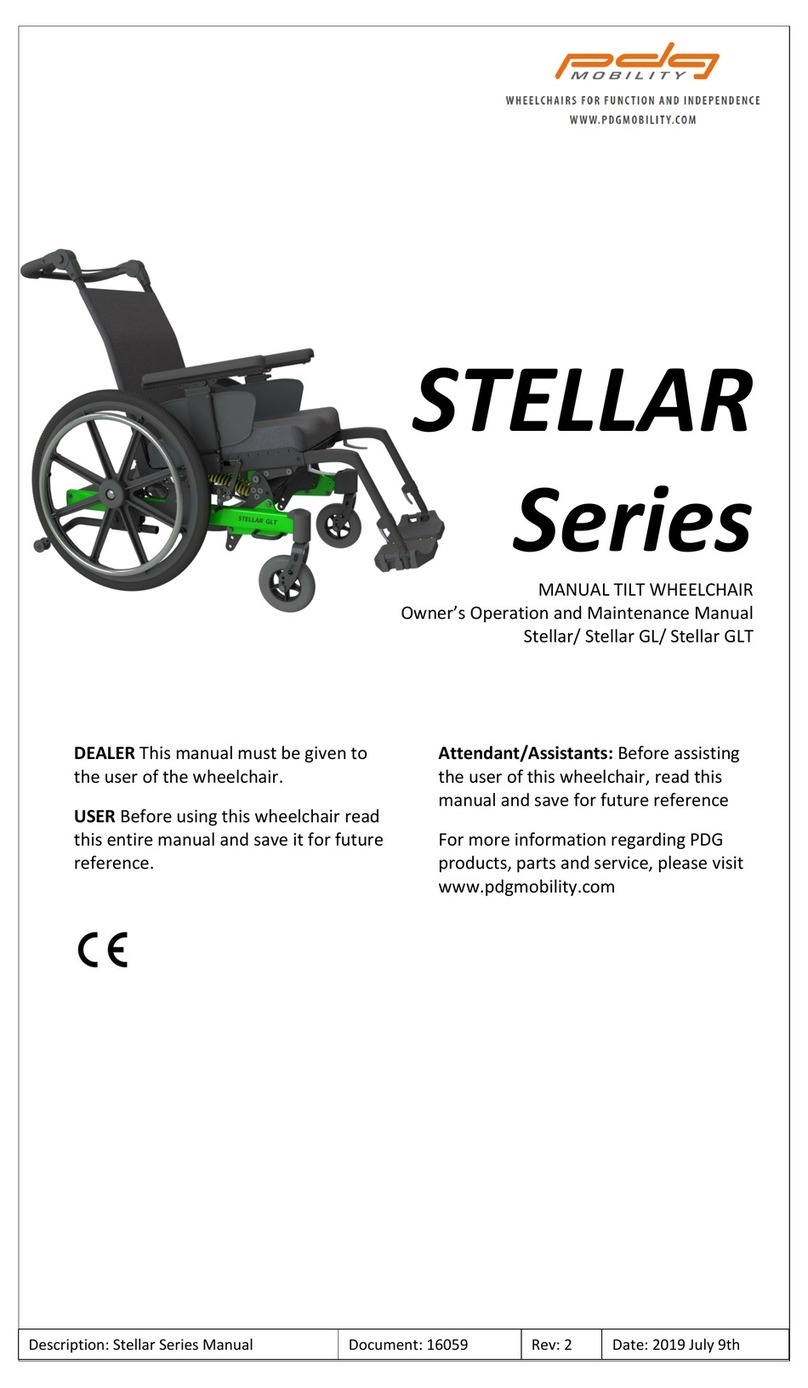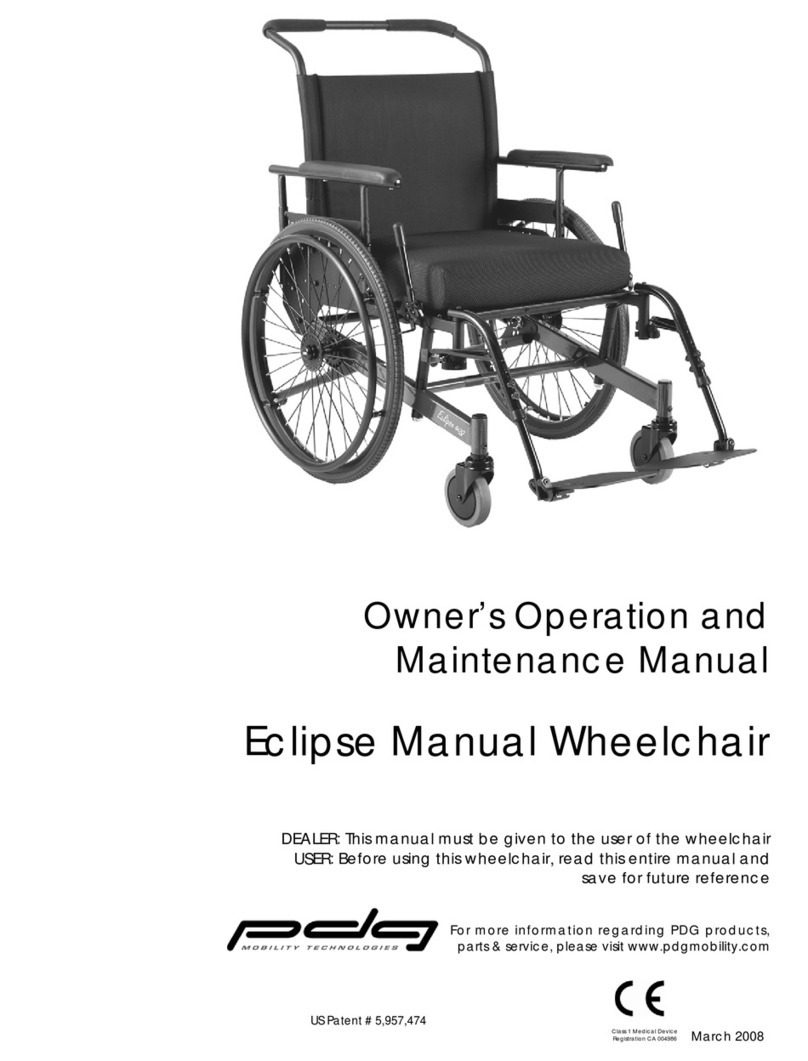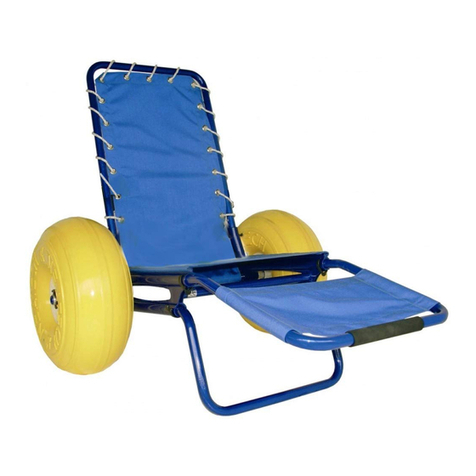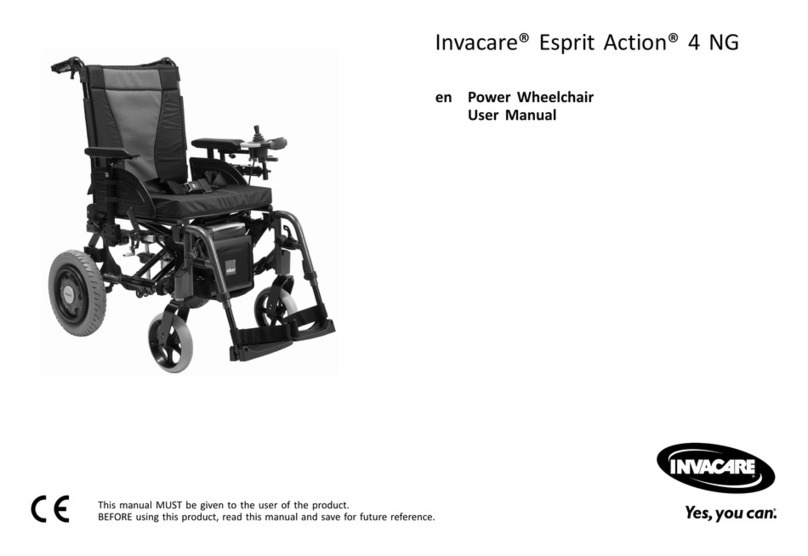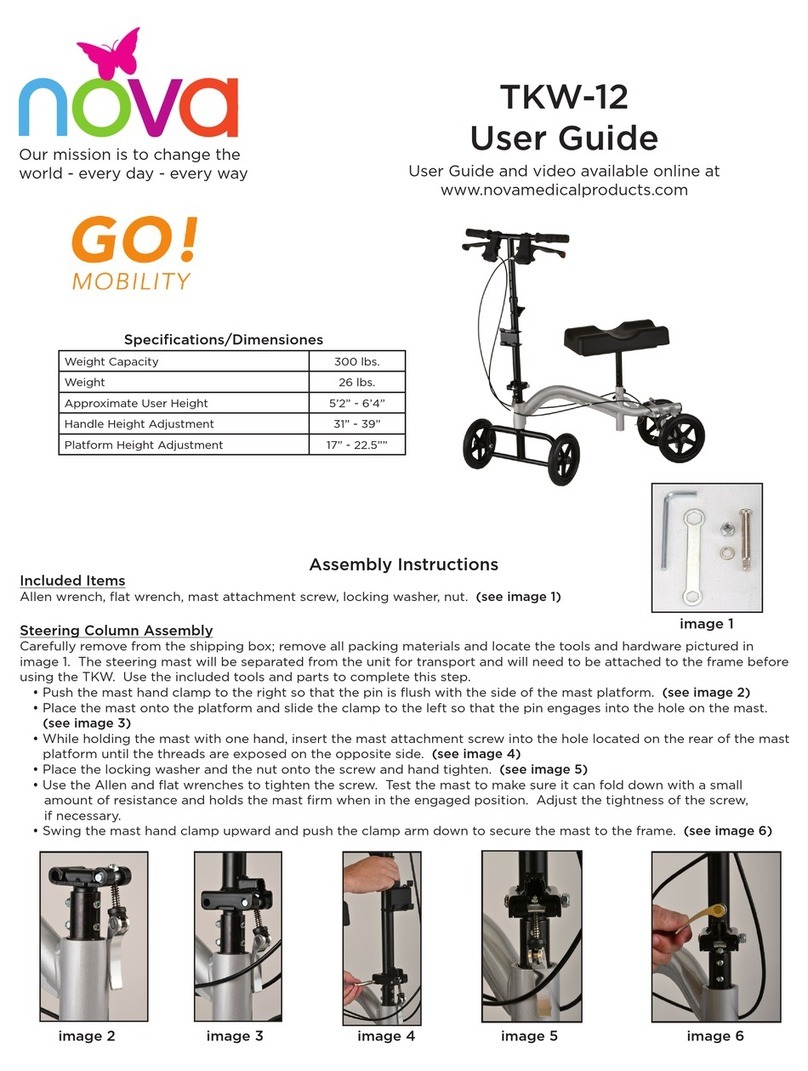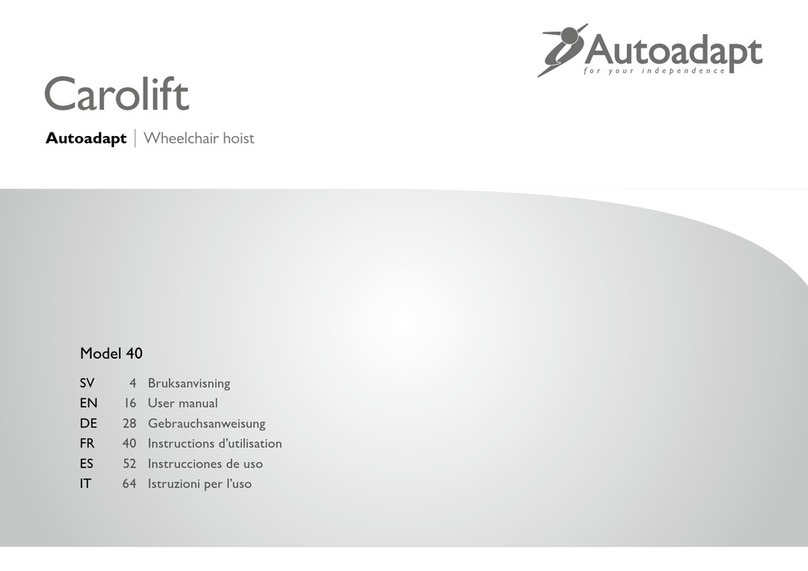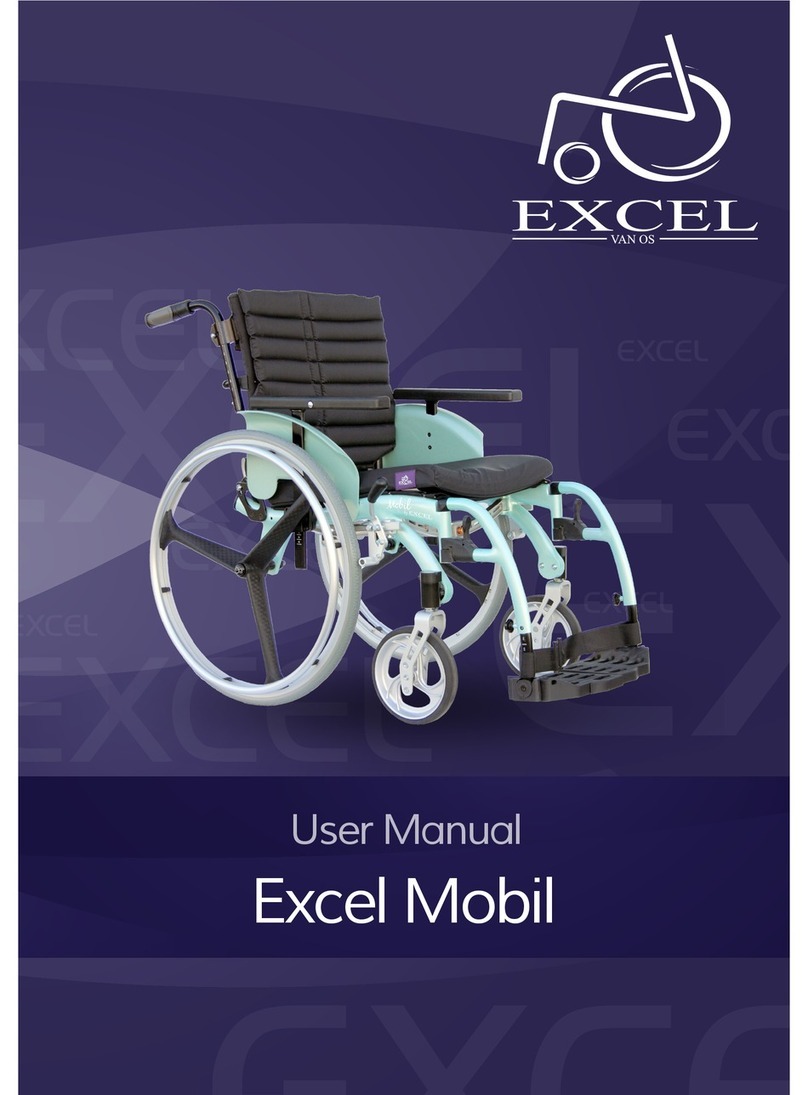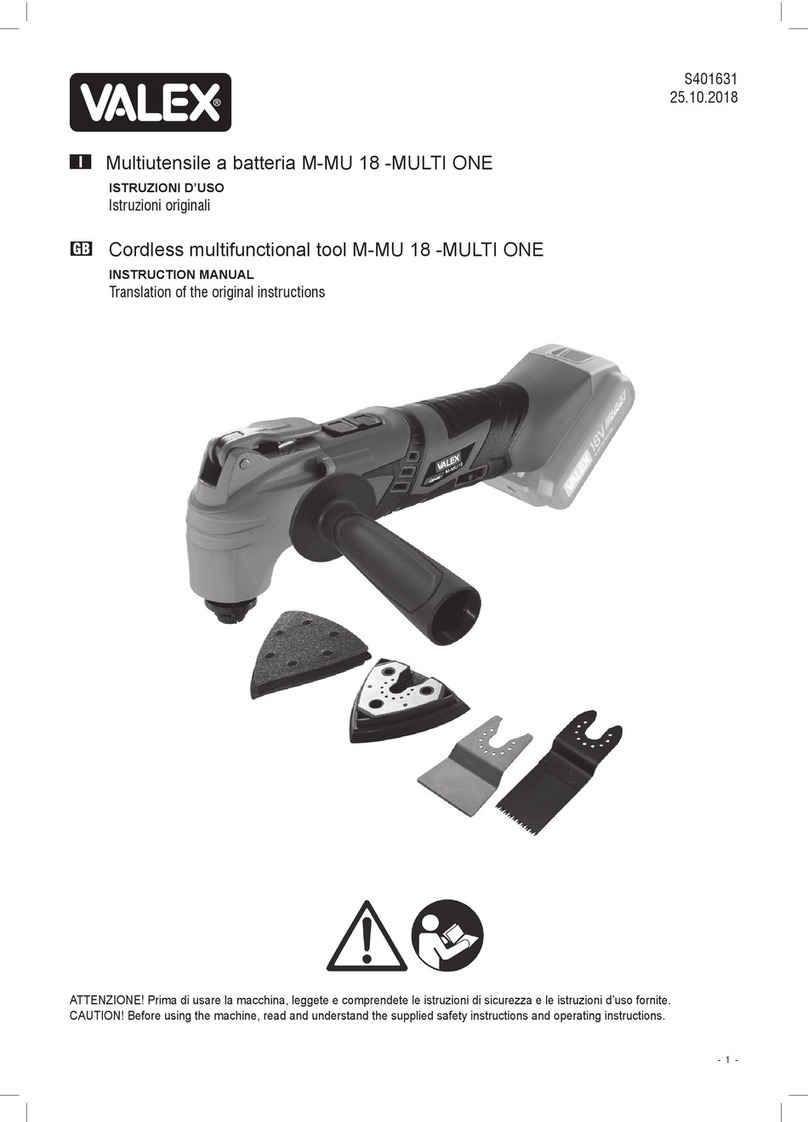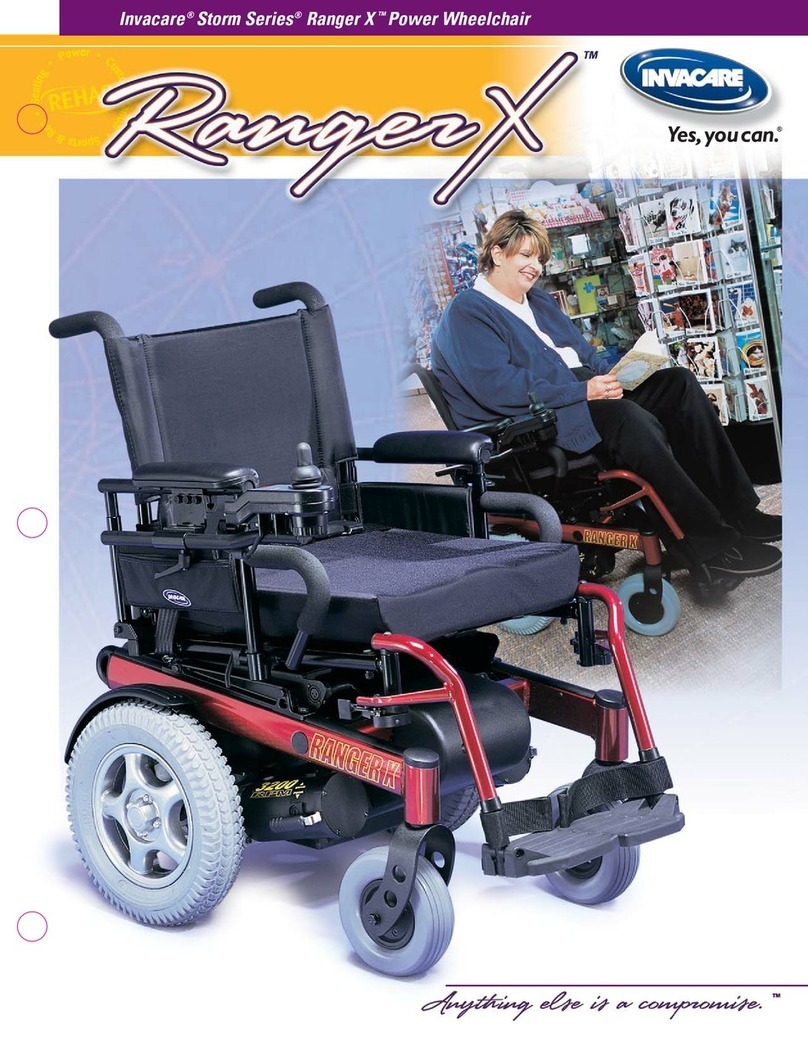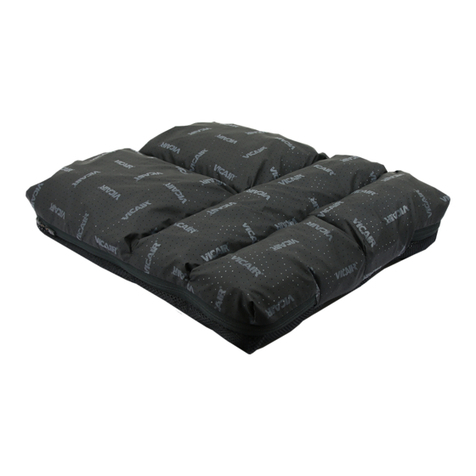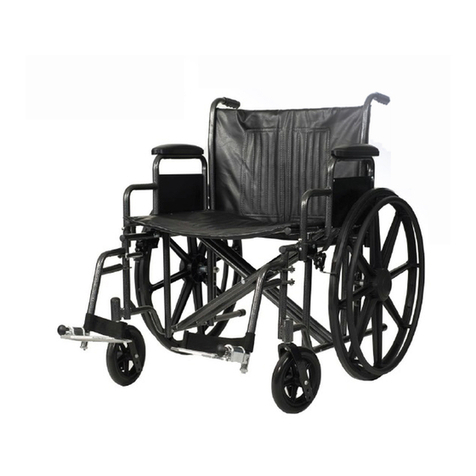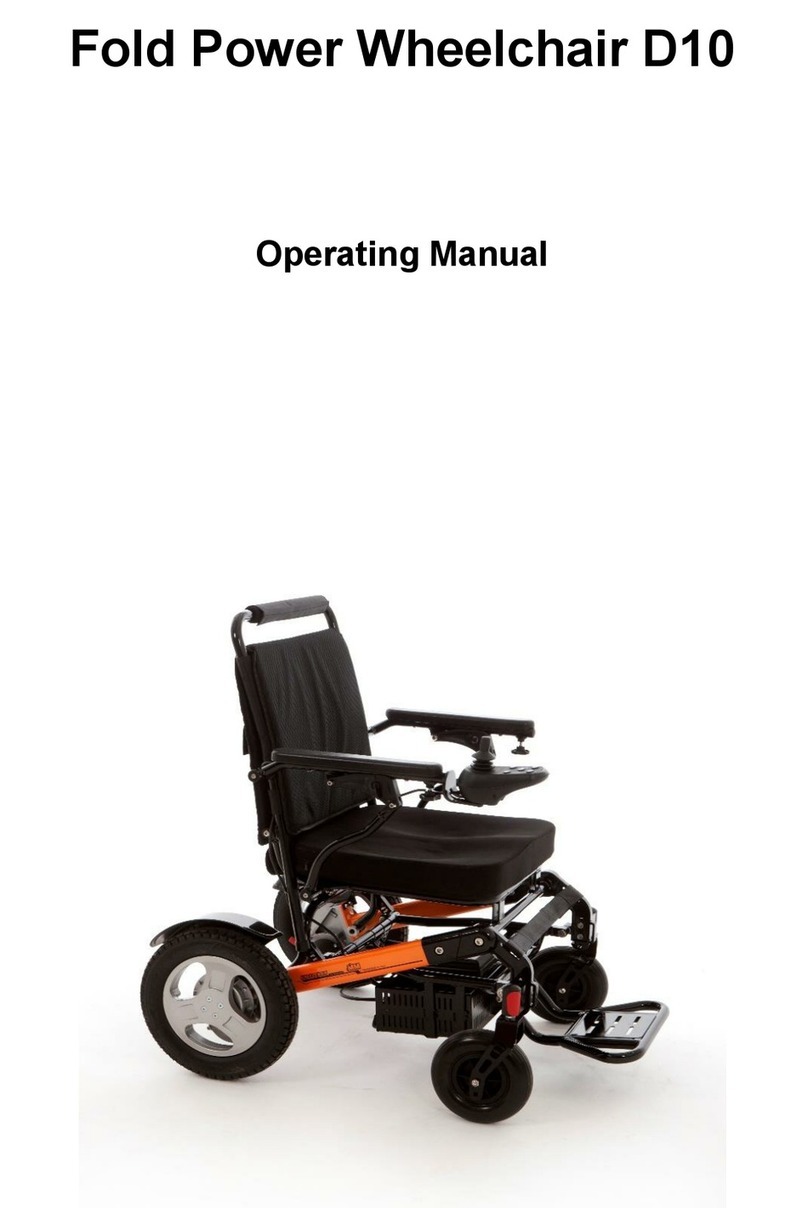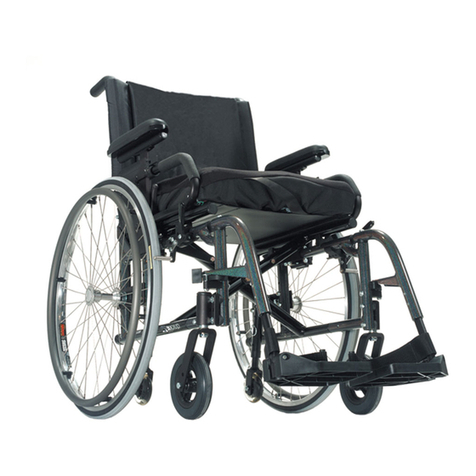page 24 page 5
Stability and Balance
To assure stability and proper operation of your wheelchair, you must at all times maintain proper
balance. Your wheelchair has been designed to remain upright and stable during normal daily activities as
long as you do not move beyond the center of gravity.
Virtually all activities which involve movement in the wheelchair have an eect on the center of gravity.
PDG recommends using seat restraints for additional safety while involved in activities that shift your
weight.
6 DO NOT lean forward out of the wheelchair any further than the length of the armrests. Make sure
the casters are pointing in the forward position whenever you lean forward. This can be achieved by
advancing the wheelchair and then reversing it in a straight line.
Coping with Everyday Obstacles
Coping with the irritation of everyday obstacles can be alleviated somewhat by learning how to manage
your wheelchair. Keep in mind your center of gravity to maintain stability/balance.
A Note to Wheelchair Assistants
When assistance to the wheelchair user is required, remember to use good body mechanics. Keep
your back straight and bend your knees whenever tilting the wheelchair or traversing curbs, or other
impediments.
Be aware of any removable (detachable) parts. These must NEVER be used for hand-held or lifting
supports, as they may be inadvertently released, resulting in possible injury to the user and/or assistant(s).
When learning a new assistance technique, have an experienced assistant help before attempting it
alone.
Tilting
6 WARNING: DO NOT tilt the wheelchair without assistance.
When tilting the wheelchair, an assistant should grasp the back of the wheelchair on a non-removable(
non-detachable) part. Inform the wheelchair occupant before tilting the wheelchair and remind him/her
to lean back. Be sure the occupant’s feet and hands are clear of all wheels.
Tilting – Curbs
After mastering the techniques of tilting the wheelchair, use this procedure to tackle shallow curbs, short
stairs, etc.
METHOD 1 - Wheelchair With Step Tubes
Apply a continuous downward motion until the balance point
is achieved and the front casters clear the curb. At this point,
the assistant will feel a dierence in the weight distribution.
Roll the wheelchair forward and slowly lower the wheelchair in
one continuous movement. Do not let the wheelchair drop the
last few inches to the ground. This could result in injury to the
occupant. Push the wheelchair forward until the rear wheels
roll up and over the curb.
3 NEVER transport this chair in the front seat of a vehicle. It may shift and interfere with the driver.
4 ALWAYS secure this chair so that it cannot roll or shift.
5 Do not use any chair that has been involved in a motor vehicle accident.
If your chair is equipped with the Transit Tie-Down System (TTDS)
Available only on Stellar and Stellar GL
1 If possible and feasible, the rider should transfer to the
Original Equipment Manufacturer vehicle seat and use
the vehicle restraint.
2 Use only Wheelchair Tie Down and Occupant Restraint
Systems (WTORS) which meet the requirements of SAE
J2249 Recommended Practice – Wheelchair Tie Down
and Occupant Restraint Systems For Use in Motor
Vehicles. Do not use WTORS designed to rely on the
wheelchair structure to transfer occupant restraint loads
to the vehicle.
3 The rider must not weigh more than 250 lbs.
4 The wheelchair has been dynamically tested in a forward
–facing mode for a 30 mph frontal impact test. The
wheelchair must be forward facing during transport.
5 In order to reduce the potential of injury to vehicle
occupants, wheelchair-mounted accessories, such as
trays and respiratory equipment should be removed and
secured separately.
6 Postural supports and positioning devices should not be
relied on for occupant restraint.
7 Do not alter or substitute wheelchair frame parts, components or seating.
8 The gures below show the locations of the wheelchair securement points, front and back.
9 Use only with Wheelchair Tie Down and Occupant Restraint Systems (WTORS) that have been
installed in accordance with the manufacturer’s instructions and SAE J2249.
10 Attach WTORS to securement points in accordance with the manufacturer’s instructions and SAE
J2249.
11 Attach occupant restraints in accordance with the manufacturer’s instructions and SAE J2249.
12 Sudden stops or impacts can structurally damage your chair. Chairs involved in such incidents should
be replaced.
If you fail to heed these warnings, damage to your chair, a fall, tip-overs or loss of
control may occur and cause severe injury to the rider or others.
Front Tie Down Back Tie Down
Front Tie Down Back Tie Down
